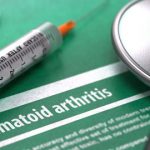WASHINGTON, D.C.—People seek—or don’t seek—an evaluation with a rheumatologist for many reasons, and seeing what we can glean from such situations helps inform us about the phases of, and risk factors for, autoimmune disease. At ACR Convergence 2024, the session Risk Stratification for Future Rheumatoid Arthritis provided insights into this topic and enlightened the audience with international data.
Clinically Suspect Arthralgias
The first speaker was Annette van der Helm-van Mil, MD, PhD, Medical Delta Professor, Erasmus Medical Center, Rotterdam, The Netherlands, and professor of rheumatology, Leiden University Medical Center, The Netherlands. She discussed work from several papers over the past few years on patients who are at risk for rheumatoid arthritis (RA). It is understood that, during the transition to developing RA, patients may pass through a phase that entails the presence of symptoms without clinically apparent synovitis. Understanding this, EULAR created a task force that sought to define the clinical characteristics of patients with arthralgias who should be considered at risk for RA.
The task force, comprising 18 rheumatologists, three health professionals, two patients, a methodologist and a research fellow, developed a list of parameters characteristic of clinically suspect arthralgia (CSA), selected the most important parameters and evaluated 50 patients as having CSA or not having CSA. (They also indicated their confidence in this judgment.) This was followed by a validation phase, in which rheumatologists collected patients with and without CSA from their clinics.
A multivariable model was then used to determine the seven most important parameters. These were: symptom duration less than one year, metacarpophalangeal (MCP) joint symptoms, morning stiffness lasting more than an hour, early morning predominance of symptoms, RA in a first-degree relative, difficulty making a fist and positive MCP squeeze test.1
Such work has been helpful in informing the evaluation of at-risk patients, particularly with regard to clinical trials looking toward preventing the onset of clinical RA.
Variables in Identifying Patients
The second speaker was Kevin Deane, MD, PhD, a professor who holds the William P. Arend Endowed Chair in Rheumatology Research, University of Colorado School of Medicine, Aurora. Dr. Deane began by discussing the multiple ways to identify patients who are at risk for RA. Some patients seek evaluation for arthralgias and others may be identified via population-based means (i.e., being concerned by a family history of RA, learning about arthritis at a health fair or being found to have abnormal lab studies).


